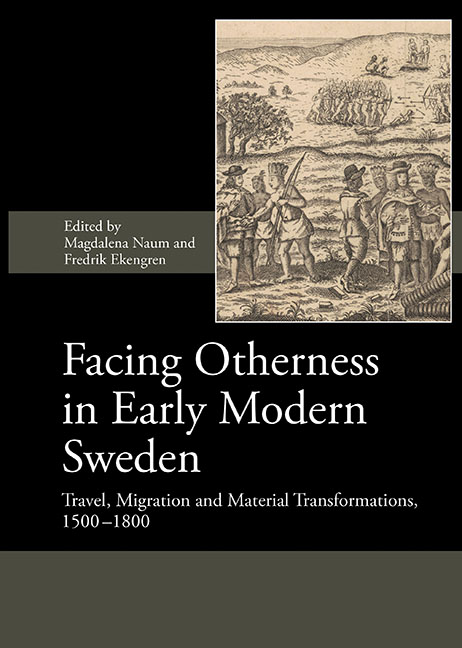Book contents
- Frontmatter
- Contents
- List of Illustrations
- List of Contributors
- Preface
- List of Abbreviations
- I Material Transformations
- Introduction
- 1 Tracing Other in 17th-Century Sweden
- 2 Houses of Wood, Houses of Stone: On Constructing a Modern Town in Early Modern Kalmar
- 3 Indigeneity, Locality, Modernity: Encounters and their Effects on Foodways in Early Modern Tornio
- 4 Brewing an Ethnic Identity: Local and Foreign Beer Brewing Traditions in 15th- to 17th-Century Sweden – an Example from Nya Lödöse
- 5 Tactile Relations: Material Entanglement between Sweden and its Colonies
- II Migration and Neighbourly Interactions
- III Overseas Travel
- IV Conclusions
- Index
Introduction
from I - Material Transformations
Published online by Cambridge University Press: 23 July 2019
- Frontmatter
- Contents
- List of Illustrations
- List of Contributors
- Preface
- List of Abbreviations
- I Material Transformations
- Introduction
- 1 Tracing Other in 17th-Century Sweden
- 2 Houses of Wood, Houses of Stone: On Constructing a Modern Town in Early Modern Kalmar
- 3 Indigeneity, Locality, Modernity: Encounters and their Effects on Foodways in Early Modern Tornio
- 4 Brewing an Ethnic Identity: Local and Foreign Beer Brewing Traditions in 15th- to 17th-Century Sweden – an Example from Nya Lödöse
- 5 Tactile Relations: Material Entanglement between Sweden and its Colonies
- II Migration and Neighbourly Interactions
- III Overseas Travel
- IV Conclusions
- Index
Summary
The first chapters of this book focus on material transformations in early modern Sweden. Ideological and cultural currents, such as Lutheranism, Classicism and the Enlightenment; the political and economic currents of European colonial expansion, in which Sweden played an active part; the growth of intercontinental trade and Sweden's ambition to shed the image of a backwater: all these factors had implications for consumption and the engagement with material culture. Between the beginning of the 16th and the end of the 18th century, the material world, practices and habits of Swedish citizens underwent considerable shifts, though the dynamics and effects of these changes were not even. The court and aristocratic circles were quick to embrace and adopt diverse European fashions and ideas. One of these was the passion for furnishing private museums, collecting and displaying souvenirs, specimens of flora, fauna and curiosa from the near and far corners of the world. Colonial expansion and growing participation in trans-oceanic travel provided eager collectors with ever-growing supplies of marvellous objects for their collections. As argued by Jonas M. Nordin, these cabinets of curiosities were not innocent sites. Displaying one's own interests, knowledge and erudition through the coveted material culture of the world signalled, in symbolic and literal terms, one's own power and supremacy. The fashion for collecting exotic objects reflected and expressed in visible form the hegemonic European aristocratic worldview, which distinguished between the “self ” and the “other”.
It was not only collectables that the colonies supplied, however. An array of colonial and exotic commodities, such as tobacco, sugar and porcelain, made their way into Swedish households. These and other novelties established a visible presence in large towns located at the intersections of international trade, while their reception was often slower and more selective at locations further from commercial and cultural centres.
The material transformations experienced in early modern Sweden were reflections of the increasing connections with the culture and markets of continental Europe stimulated by the kingdom's rise on the political stage. This, in turn, required a certain level of cultural openness and a promotion of foreign influences. However, the adoption of novel materials and ideas depended on a willingness and desire among different groups in society to embrace the new. One can call this process a negotiated response to newness, which included acceptance, manipulation and reworking of new objects to fit established practices.
- Type
- Chapter
- Information
- Facing Otherness in Early Modern SwedenTravel, Migration and Material Transformations 1500–1800, pp. 3 - 4Publisher: Boydell & BrewerPrint publication year: 2018

